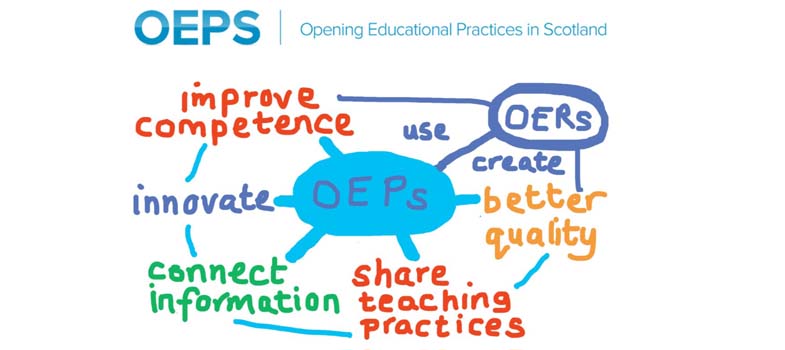Why use open, online courses - a guide for organisations in the informal learning sector
Why use open and online courses: a guide for organisations organising informal learning opportunities
Introduction
The use of tablets and smart phones has grown rapidly over the last decade. People often turn to Google, YouTube or elsewhere on the Internet if they want to learn something.

At the same time there has been a rapid growth in the availability of free, online courses. Some of this material is copyright; much it is licensed under Creative Commons (see below) and is free to use, share and reversion. This briefing looks at the opportunities which online resources offer and in particular the advantages of using ‘open’ resources in community and workplace settings.
It’s helpful to distinguish learning materials in general from online courses. The former may be simply a video or audio clip, graphic, short piece of text, game or activity. Online courses, however, have clearly defined learning outcomes, a defined structure for a set of learning activities and often, but not always, some form of automated, online assessment.
Openly licensed courses or learning materials are sometimes referred to as Open Educational Resources - OER for short.
OER definitions
An open license allows material to be copied, distributed, edited, remixed and built upon. Find more about open licenses at Creative Commons website.
Courses and other educational materials developed under an open license are known as OER
Why use online courses?
Online courses are now part of the educational landscape. They are not a panacea. Like any other resource they need to be used thoughtfully and with concern for the needs, experience and context of learners. And also like any other resource it is how they are used that matters. Other briefings in this series consider the challenges of using online courses and possible ways of overcoming them.
Scale and reach
Online courses can be studied by anyone with access to the Internet. Moreover, modern software enables course materials to be readable on a wide range of digital devices such as tablets and smartphones. Access is no longer restricted to those with a desktop or laptop computer which means that learning can be accessed anywhere and anytime.
Interactivity
Well-designed courses provide opportunities for active learning through interactive exercises.
Feedback
It’s possible to design courses so that learners share some personal information and provide insights into their experience through the completion of exercises or survey questions.
Analytics
It’s possible to collect and aggregate data on how many people engage with the course, what they study and their study outcomes.
Student focus
Using online courses enables learners to build on and enhance their digital literacy skills.
Why use openly licensed materials?
The points noted above apply to any online course. Courses issued with an open license have additional attributes that can be utilised.
Cost
There is no charge for using openly licensed courses. Some course providers do charge for a certificate that documents successful completion.
Unfettered use
The open license allows unrestricted use of course material, whether viewed online or downloaded to an e-reader, or in hard copy.
Reputation
Openly licensed materials are often derived from earlier versions that have been developed by well-recognised and trusted organisations and have been tried, tested, revised and improved.
Editable
The open license allows individuals and organisations to edit material to be more relevant to their particular context (subject to giving appropriate acknowledgement to the originator).
New versions
Open, online courses can be revised and/or remixed with other openly licensed material to produce new courses that are improved in the light of experience, more up to date, or targeted at a different set of students. As a result new courses may be produced at relatively low cost.
Economies of scale and contextualisation
Taken together these attributes of open online courses allow the possibility of combining large-scale reach and economies of scale with low cost, bespoke versioning for specific audiences.
Key points
![]() Good
quality, free and openly licensed courses are available on a wide range of
topics.
Good
quality, free and openly licensed courses are available on a wide range of
topics.
![]() As in any other form of education and training good
practice needs to be learner centred.
As in any other form of education and training good
practice needs to be learner centred.
![]() If you are interested in using online courses then
you may wish to consult the wider range of briefings, reports and short courses
that have been developed by the Open Educational Practices in Scotland project and
can be found in the OEPS legacy
collection.
If you are interested in using online courses then
you may wish to consult the wider range of briefings, reports and short courses
that have been developed by the Open Educational Practices in Scotland project and
can be found in the OEPS legacy
collection.
Download this briefing as a document or a .
